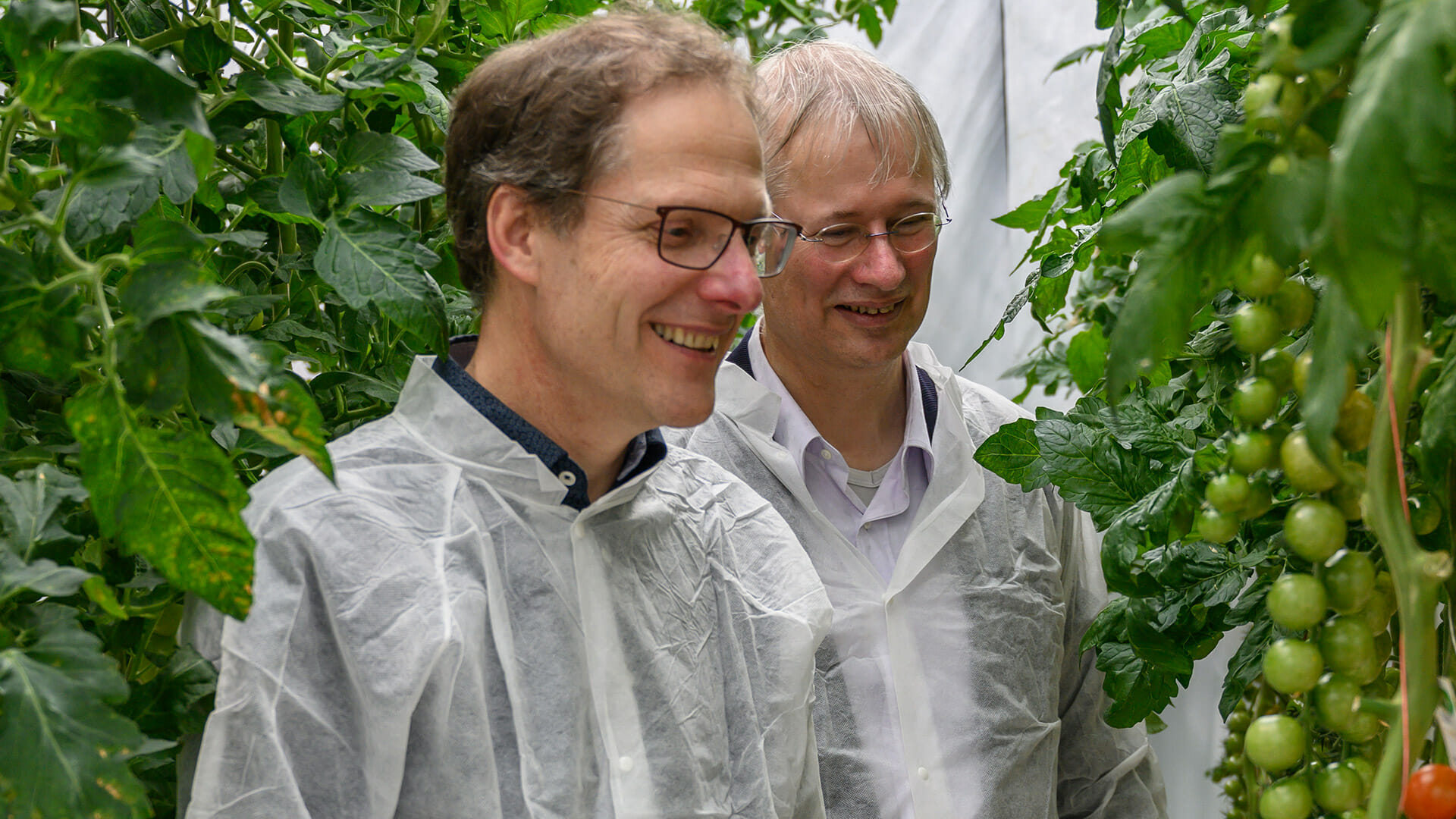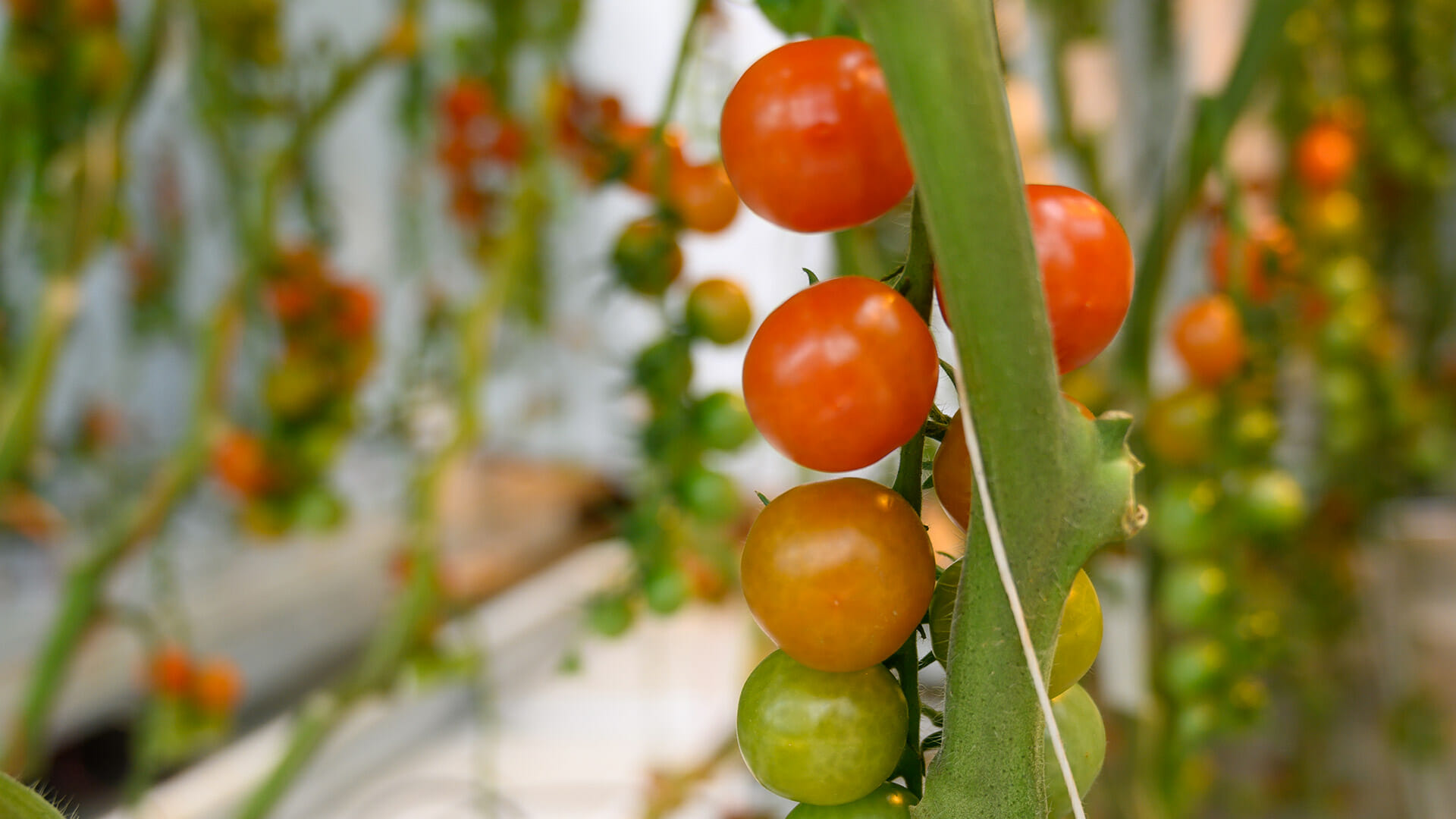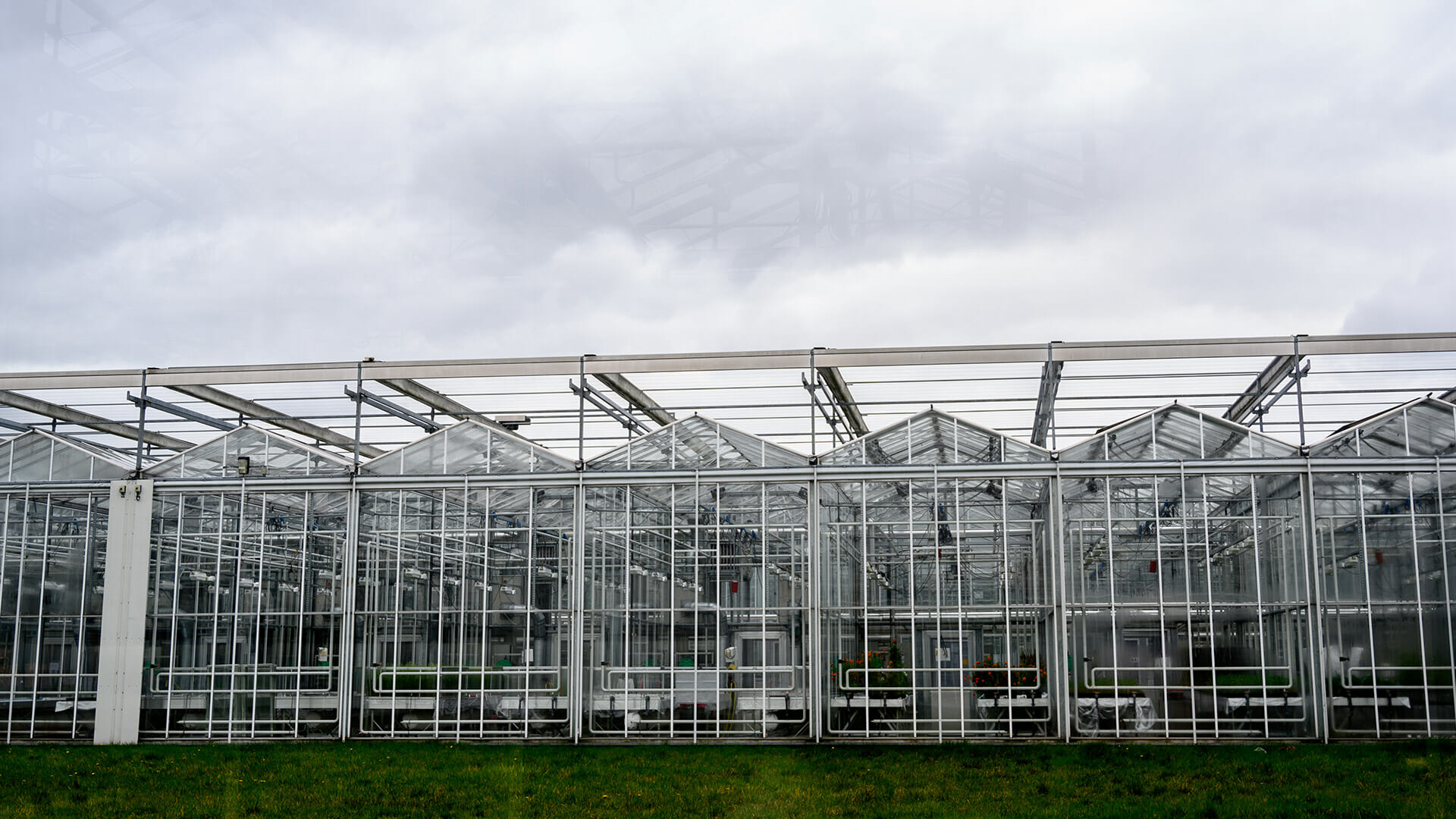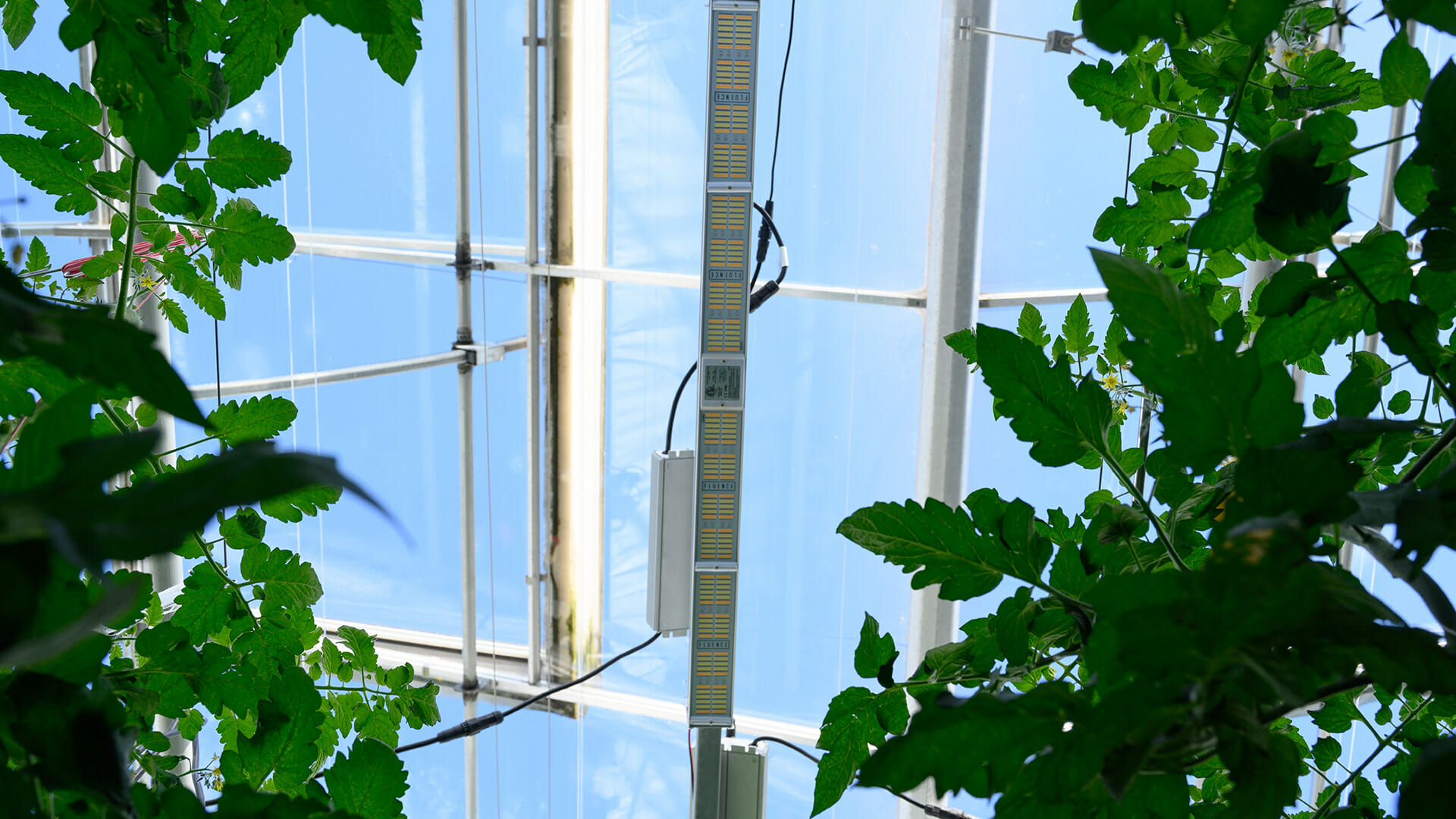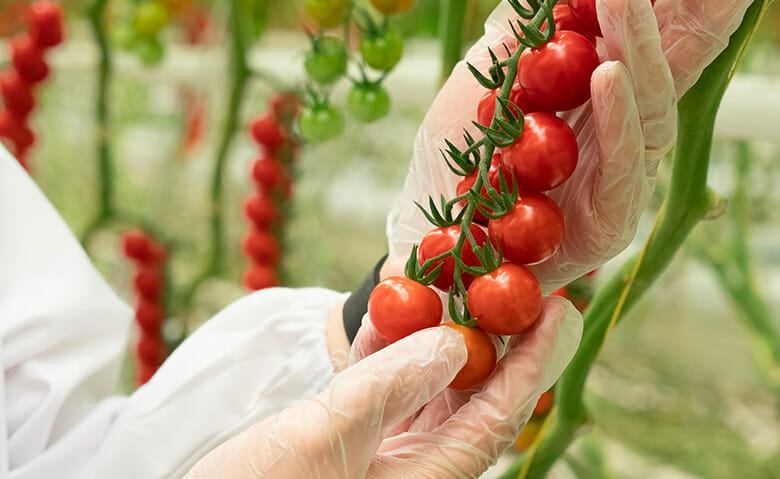
21 Jun Webinar: Optimal Lighting for Commercial Tomato Production
With so much speculation and confusion in the commercial tomato cultivation community — as related to supplemental lighting — Fluence set out to demystify the choices by conducting decisive scientific studies. Led by three preeminent horticultural scientists, our recent webinar revealed the results of those studies. In this blog, we’ll summarize the high-level topics covered in the webinar along with answers to a few of the attendees’ questions.
Common Cultivator Concerns
Fluence’s director of horticulture services, Dr. Abhay Thosar, kicked off the webinar with a brief overview of supplemental lighting. He reminded attendees about how the optimal DLI for tomato growth drops off significantly from September through March, a deficit perfectly resolved by using supplemental lighting.
Dr. Thosar addressed some common concerns he hears from cultivators who are evaluating the switch from high-pressure sodium lamps (HPS) to LED lighting solutions. He’s heard many cultivators mention that they rely on the heat generated from HPS while others are concerned about the expense of LED lighting vs. HPS. And obviously, almost every cultivator wonders about the impact LED lighting will have on their yields.

Comparing HPS to LED
Dr. David Hawley, senior scientist at Fluence, and Dr. Haris Ouzounis, Fluence senior photobiologist and horticulture service specialist, described two studies conducted in conjunction with Wageningen University & Research in the Netherlands and Dutch greenhouse consultancy Vortus BV.
Dr. Hawley shared the results of a study designed to evaluate yields and quality of tomato crops grown under broad-spectrum LED light vs. HPS. The bottom line? While the results were cultivar-dependent, the study demonstrated a clear tendency toward higher yield under LEDs as compared to HPS. Interestingly, researchers also learned that plants grown under LEDs were much more compact, which can have a significant beneficial impact on labor costs.
The second study took a deeper dive into investigating the optimal spectrum for tomato production. Researchers deployed four unique spectra ranging from BROAD R4 (white light) to R9B (a narrow-band spectrum comprised of red and blue light) to analyze the growth and development of two popular tomato cultivars, Brioso, and Merlice. While results varied based on cultivar, the study concluded that both the cultivars that were tested performed better under broad spectra than narrow-band R9B.
Select Questions and Answers
Following the presentation, webinar attendees asked questions of the experts; a sampling of the questions follows. View the entire webinar to hear all the questions and answers.
Q: During the study, where was the light intensity measured?
A: The light was measured at the head of the canopy because that is where the plant is most actively developing — and that’s where you want optimal intensity.
Q: What techniques were used for pollination and pest management in the study, and can those techniques be used in commercial applications?
A: We used techniques typically used in commercial applications. Most of the pollination and pest management was done biologically, with a few exceptions. For example, fly traps were used to combat white flies.
Want to learn more about insect activity under different light spectra? Watch our insect webinar!
Q: What’s the impact of spectra including UVA and UVB on the plants?
A: The light outside of photosynthetically active radiation (PAR) can have a fair impact on crop development. Longer wavelengths — particularly far red — are beneficial for manipulating morphology. More far red light simulates shade and causes the plant to stretch out. Shorter wavelengths simulate direct sunlight. UVA can help the plant produce more anthocyanins, which is a red pigment that contributes to tomatoes’ red color. UVB isn’t recommended because it creates significant complications in your daily-to-day plant husbandry.
Q: At what natural light level would you recommend, from a tomato production standpoint? Do you balance the natural light and supplemental lighting?
A: As a horticulture services team, this is an area where we prefer to work closely with growers. We factor in their specific location and circumstances to determine how and where to best utilize supplemental lighting — not only during winter months but even extending into spring and early summer as well. That said, the typical 240 watts per meter squared in greenhouses is where growers would typically turn off supplemental lights.



